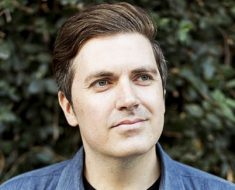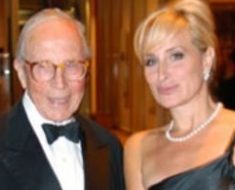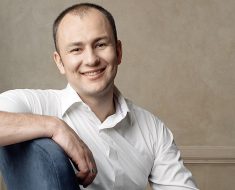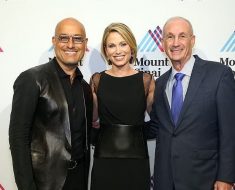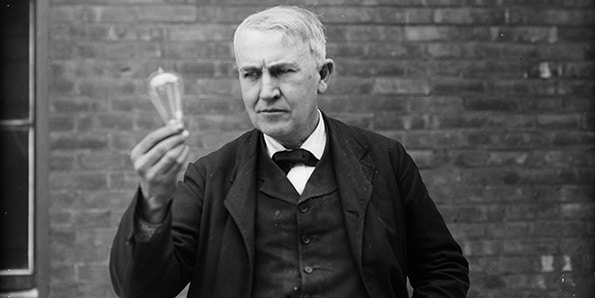
Thomas Edison net worth is $170 Million. Also know about Thomas Edison bio, salary, height, age weight, relationship and more …
Thomas Edison Wiki Biography
Thomas Alva Edison was born on 11 February 1847 in Milan, Ohio USA, to a Canadian-born father of Dutch descent and a New York-born mother. He is credited with, and is probably best known for inventing the light bulb, phonograph and motion picture camera – all among the more than 1,000 patents eventually registered to him – plus founding the General Electric Company, Edison died on 18 October 1931, in West Orange, New Jersey USA.
So just how rich was Thomas Edison? Sources estimate that at the time of his death, Edison’s net worth was over $12 million, at today’s rate about $170 million. His wealth was accumulated over a period of more than 60 years, as a consequence of his inventions and business dealings.
Thomas was the youngest of seven children, and was largely home-schooled by his mother. His business mind and entrepreneurship was demonstrated early, as a young teen selling candy and newspapers on commuter trains around Detroit, until he secured exclusivity selling newspapers on the streets of nearby Port Huron, to where the family had moved when the rail-road by-passed Milan, and also selling his own self-produced newspaper – Grand Trunk Herald. His net worth was beginning to rise.
Edison became a telegraph operator, job training given to him by a grateful J. MacKenzie after Thomas saved his son from a rail accident. He subsequently moved to Louisville in Kentucky in 1866, to work for the Associated Press (AP) bureau of Western Union, but he was fired after an accident with battery acid caused damage to his boss’s desk. Regardless, Edison’s inventive mind saw him register his first patents in 1869, an electric vote recorder and a stock ticker, adding eventually to his net worth.
Thomas built a complex at Menlo Park specifically to invent and improve mostly electrical products, to improve knowledge, and soon followed with registering various improvements to telegraphic equipments, but the first of Edison’s major inventions and patents was the phonograph in 1877, a totally new and unforeseen product, which earned him the nickname of The Wizard of Menlo Park. The quadruplex telegraph followed, bought by Western Union for more than double what Edison thought it might be worth, a significant boost to his net worth.
Many patents ensued, research and development often undertaken by others but invariably at the direction of Thomas Edison. A significant invention of the 1880s was the carbon microphone, so far ahead of its time that it was widely used in telephones, with the Bell receiver, for the next 100 years, and in radio broadcasting until the end of the 1920s. The patent was confirmed as Edison’s in 1892 after a ruling by the federal court. Of course this was a major contributor to Edison’s net worth.
Edison’s next major invention was the incandescent light bulb. Many had tried unsuccessfully to produce one before, but Edison’s research convinced him to use copper filament, which was developed to a manageable size, by drawing a low amount of current. Tests finally arrived at a commercially viable product utilising 110 volts, which could be expected to last for a minimum of 1200 hours, and so he filed for, and was granted a patent in 1880. Of course, this was a further very significant base in adding to Edison’s net worth, as patents were guarded for at least 14 years. However, he formed a company called Ediswan with British inventor Joseph Swan, who had registered a similar patent in the UK before Thomas’s. Thomas perhaps unintentionally advertised his product world-wide, by installing the system on the cruise ship Columbia, and in Europe in the Brno (now Czech Republic) Marien Theater. Of course, Edison then devised and patented a method of power distribution, naturally beginning in New York City, and then opening a power station in London at Holborn Viaduct. After considerable internal disagreement, eventually Edison’s General Electric company(GE) – minus ‘Edison – adopted the AC current system in 1892, ending the ‘battle of the currents’. (It’s worth noting that by revenue GE is still the sixth largest company in the US, and the 14th most profitable.)
Edison’s further inventions were also significant, including what became the basis of the x-ray machine, the fluoroscope. In 1892, using the knowledge of telegraphy, he patented the stock ticker, the first electricity-based broadcast system, and in the same year registered a patent for a two-way telegraph. His net worth benefited accordingly.
Around the same time, Thomas patented a motion picture camera, and the era of film-making was about to begin. A peep-hole viewer – Kinetoscope – was developed for use in the numerous penny arcades of the time, and by the mid-1890s motion pictures could be projected on screens for public viewing, and soon afterwards a synchronised soundtrack on a cylinder heralded the first ‘talkies’, although full development took another 20 years. Still, Edison’s net worth was continuing to rise, and was perpetuated by his film studio ultimately producing more than 1200 films.
Edison continued to develop and refine all his initial inventions until the 1920s, almost all based on electrics and electricity – a short-lived involvement in mining was unsuccessful.
Thomas Edison was rewarded with numerous honours and awards for his work; the most important was the French Legion of Honour(1881). In 1915 he was awarded the Franklin Medal ‘…for discoveries contributing to the foundation of industries and the well-being of the human race…’. The US congress not only bestowed the Congressional Medal on him in 1928, but in 1983 designated his birthday ‘National Inventors Day’. In 1997 “Life” magazine nominated him as ‘the most important person in the last 1000 years’ for his light bulb invention, and he was voted the 15th most important by the American public. Certainly he ranks with John D. Rockefeller and Andrew Carnegie as one of the most influential businessmen and entrepreneurs of the industrial era, if not one of the richest.
In his personal life, Thomas Edison married 16 year-old Mary Stilwell from 1871, two months after their meeting, until her death from unspecified causes in 1884, and with whom he had a daughter and two sons. From 1886 until his death, he was married to Mina Miller – 20 years-old to his 39 years at the time of their marriage – with whom he also had a daughter and two sons.
IMDB Wikipedia $170 million 1847 1931 5 ft 10 in (1.78 m) Authors Businessperson Charles Edison Cooper Union Cooper Union (1875–1879) Dutch-American Edison Entrepreneur February 11 Film director Film producer Inventor J. MacKenzie Joseph Swan Jr. Milan Nancy Matthews Elliott New Jersey October 18 Ohio Samuel Ogden Edison Scientist Scottish American The Wizard of Menlo Park Theodore Miller Edison Thomas Thomas A. Edison Thomas Alva Edison Thomas Edison Thomas Edison Net Worth United States United States of America West Orange
Thomas Edison Quick Info
| Full Name | Thomas Edison |
| Net Worth | $170 Million |
| Date Of Birth | February 11, 1847, Milan, Ohio, United States |
| Died | October 18, 1931, West Orange, New Jersey, United States |
| Place Of Birth | Milan |
| Height | 5 ft 10 in (1.78 m) |
| Profession | Inventor, Entrepreneur, Scientist, Businessperson, Film Producer, Film director |
| Education | Cooper Union (1875–1879) |
| Nationality | United States of America |
| Spouse | Mina Miller, Mary Stilwell, Mina Miller, Mary Stilwell |
| Children | Charles Edison, Theodore Miller Edison |
| Parents | Samuel Ogden Edison, Jr, Nancy Matthews Elliott |
| Siblings | Samuel Ogden Edison, Marion Wallace Edison, Eliza Smith Edison, William Pitt Edison, Harriett Ann, Carlile Snow Edison, William Pitt Edison, Samuel Ogden Edison, Marion Wallace Edison, Eliza Smith Edison, Carlile Snow Edison, Harriett Ann |
| Nicknames | Thomas Alva Edison , Edison, Thomas , Thomas A. Edison , The Wizard of Menlo Park |
| IMDB | www.imdb.com/name/nm0249379 |
| Awards | Edward Longstreth Medal, Albert Medal, Congressional Gold Medal, John Scott Legacy Medal and Premium, Franklin Medal, John Fritz Medal, Matteucci Medal, Rumford Prize, Distinguished Service Medal, Grammy Trustees Award, Technical Grammy Award, Edward Longstreth Medal, Albert Medal, Congressional Gol… |
| Movies | The Execution of Mary Stuart, Carmencita, Sioux Ghost Dance, Monkeyshines, Electrocuting an Elephant, Boxing Cats, Athlete with Wand, Nursery Favorites, Fatima’s Coochee-Coochee Dance, Annie Oakley, The Patchwork Girl of Oz, The Passion Play of Oberammergau, Chinese Opium Den, The Gordon Sisters Box… |
Thomas Edison Quotes
- [on action] Everything comes to him who hustles while he waits.
- [on encouragement/discouragement] I never allow myself to become discouraged under any circumstances…The three great essentials to achieve anything worthwhile are, first, hard work; second, stick-to-Itiveness; third, common sense.
- Opportunity is missed by most people because it’s dressed in overalls and looks like work.
- School was repulsive to me.
- My mother was the making of me. She understood me; she let me follow my bent. She was so true, so sure of me; and I felt I had something to live for, someone I must not disappoint.
- [His last words, after lapsing in and out of consciousness] It is very beautiful over there.
Thomas Edison Important Facts
- Invented the phonograph, the incandescent electric light bulb, the alkaline storage battery among other things. He held more than 900 patents and laid the foundation for the modern electric age.
- The film industry found itself centered in Los Angeles in part because of Thomas Edison. Edison formed the Motion Picture Patent Company (MPPC), and teamed up with a few other prominent figures in film production, giving them a sort of monopoly on filmmaking. They wouldn’t let other filmmakers use their technology, and they controlled the different steps of production. Supposedly, they even hired goons to enforce their monopoly. As a result, filmmakers relocated as far away as possible from Edison’s base in New Jersey. As a benefit, L.A. also turned out to have cheap land and weather that made uninterrupted filming easier.
- Founded Edison Manufacturing Co., a film production/distribution company. NOTE: Although he founded the company, he was not a “hands-on” producer and had little if anything to do with the actual production of the films the company made.
- Founded Conquest Picture Company, a film production company active from 1917-18.
- Inducted into the Entrepreneur Walk of Fame in 2011 (inaugural class).
- Inducted into the Entrepreneurship Hall of Fame.
- Co-founder, with George Kleine, of K-E-S-E Service, a film distribution company, in 1916. It went out of business in 1927.
- Inducted into the International Lineman Hall of Fame in 2006 (inaugural class).
- Inducted into the IP (Intellectual Property) Hall of Fame in 2006 (inaugural class).
- Inducted into the Florida Inventors Hall of Fame in 2014 (inaugural class).
- Founded Edison Records (1898-1929).
- Inducted into the Automotive Hall of Fame in 1969.
- In 1931, when he died, his estate was estimated at well over $12 million. His estate included shares of Thomas A. Edison, Inc. valued at more than $10 million, $1,342,000 in United States bonds, $48,000 in railroad bonds, $48,000 in cash, and 76,000 shares in 37 different companies that no longer exist.
- His second patent, an improved stock indicator machine, was sold to Western Union for $40,000.
- In association with two business partners, he invented a new type of printing telegraph called a “gold printer” that he sold to Western Union for $15,000.
- By 1876, he had amassed $40,000 through the sale of various telegraphic devices.
- His attempts to force independent filmmakers to use his patented movie equipment resulted in an exodus of the film industry from the East Coast, where almost all films were produced, to California and a little town called Hollywoodland, now known as Hollywood.
- Elected to the New Jersey Hall of Fame in 2007 for his services to technology (inaugural election). Official induction ceremonies held in May 2008.
- He was member of the Academy of Motion Picture Arts & Sciences (AMPAS)
- His father, Samuel Edison, was of Dutch ancestry and his mother, Nancy Elliot, was of English decent.
- Invented the Kinetograph camera and the peephole kinetoscope viewer. The Edison Manufacturing Company’s (really a very early “studio”) earliest films were produced solely to demonstrate the use of the peephole viewer.
- Invented the cylinder recorder (phonograph) but it was Emile Berliner who created the flat disc; Edison licensed the patent(s) from him.
- Despite his company producing one of the earliest advertisements for cigarettes (Admiral Cigarettes), Edison became an ardent anti-smoking advocate; going so far as to say that he would not hire anyone who smoked.
- Edison’s son allegedly captured his last breath in a glass jar. The jar is on display at the reconstructed Menlo Park at Greenfield Village in Dearborn, Michigan.
- His company was considerably late in getting involved in the recorded music business. While he did invent the phonograph, his intention was to market it as a business dictation machine. The concept of recorded music never crossed his mind.
- Father of Charles Edison.
- He played virtually no role in the production of individual films by the movie company that bore his name.
- Awarded a Congressional Gold Medal, 29 May 1928 (45 Stat. 1012).
- Depicted on the obverse of a USA $1 commemorative silver coin issued in 2004, celebrating the 125th anniversary of the light bulb.
- The last years of his life were plagued by financial failures, including plans to make houses out of poured formed concrete (it never caught on with the public) and making rubber from goldenrod (it decomposed too quickly).
- Pictured on a 3¢ US postage stamp in the Famous Americans/Inventors series, issued 11 February 1947 (centennial year of his birth).
- He is often credited with the invention of the incandescent light bulb, but that is untrue; he only perfected it. Similar bulbs were already in existence but they were expensive, did not last long and gave off a bad smell. By developing a low-cost, long-lasting, carbonized cotton filament, Edison made electrical light cheap enough to be financially practical.
- Rarely if ever slept a normal eight-hour period. He preferred to take “cat naps” throughout the day, and kept cots in his office and lab.
- Other inventions to his credit include celophane tape, waxed paper, an improved version of the typewriter keyboard, and “the electric pencil”, a forerunner to today’s fax machine.
- Close friend of Henry Ford.
- Is credited with the invention of sprocketed cinema film.
- Many of his experimental films were made in a small wooden building dubbed “The Black Maria” (spelled Maria but pronounced “Mariah”) because it resembled a police wagon of the same name. Edison’s Black Maria was built on a lot next to his lab and office. The building, essentially a large wooden shed covered with tar paper, was small enough that it was mounted on circular tracks so it could be turned to accommodate sunlight through an opening in the roof. The original has long since burned down, but a reproduction of the structure is located at the Edison National Historic Site (a museum with a preserved laboratory facility) in West Orange, New Jersey.
- Is venerated by a sect of the Shinto faith as “the god of electrcity”.
- While his partial deafness was the subject of a great deal of speculation and mythology, it is generally assumed that it was caused by a childhood bout of scarlet fever.
- In his later years, he often committed social faux pas by making racist and anti-Semitic comments before the press.
- Serbian inventor Nikola Tesla (credited with the practical development of alternating current) briefly worked for Edison as a technician. He quit after arguing with Edison one too many times.
- Enjoyed communication with Morse Code so much that he proposed marriage to his girlfriend in it, and nicknamed his children “Dot” and “Dash”.
- Was home-schooled.
- Reportedly drank “wine coca” (a medicinal tonic made from coca leaves, the same type of coca that cocaine is extracted from) during marathon research sessions that ran into the night.
- Using a primative cylinder and foil device, he created the first known recording of a human voice (his own, reciting the poem “Mary Had A Little Lamb”).
- When he lay dying at his home in New Jersey, newspaper reporters were anxiously awaiting a sign from his wife of his death. She signaled Edison’s passing by turing a light ON, not off, in his bedroom.
- Made several experimental short films, some lasting only several seconds, mostly to test his equipment. One film–Edison Kinetoscopic Record of a Sneeze (1894)–which features a man sneezing, runs for 1-1/2 seconds.
- Inducted into the National Inventors Hall of Fame, 1973 (sole charter inductee).
Thomas Edison Filmography
| Title | Year | Status | Character | Role |
|---|---|---|---|---|
| The Passion Play of Oberammergau | 1898 | Short producer – uncredited | Producer | |
| Blackton Sketches, No. 2 | 1896 | Short producer – uncredited | Producer | |
| Blackton Sketches, No. 3 | 1896 | Documentary short producer – uncredited | Producer | |
| Fatima’s Coochee-Coochee Dance | 1896 | Short producer | Producer | |
| The Execution of Mary, Queen of Scots | 1895 | Short producer – uncredited | Producer | |
| Mr. Mike’s Mondo Video | 1979 | producer – segment “Electrocuting an Elephant”, archive footage, as Thomas Alva Edison | Producer | |
| The Patchwork Girl of Oz | 1914 | producer | Producer | |
| A Minstrel Show | 1913 | Short producer | Producer | |
| Her Redemption | 1913 | Short producer | Producer | |
| The Irish Policeman | 1913 | Short producer | Producer | |
| Nursery Favorites | 1913 | Short producer | Producer | |
| Julius Caesar | 1913 | Short producer | Producer | |
| Das Stelldichein der Verehrer | 1912 | Short producer | Producer | |
| Lucia di Lammermoor | 1911 | Short producer | Producer | |
| Frankenstein | 1910 | Short producer | Producer | |
| Parsifal | 1904 | Short producer | Producer | |
| Electrocuting an Elephant | 1903 | Documentary short producer | Producer | |
| Thomas Edison, Train Films 1897-1906 | 1904 | Documentary short | Director | |
| The Trick Cyclist | 1901 | Short | Director | |
| Bicycle Trick Riding, No. 2 | 1899 | Short | Director | |
| A Day with Thomas A. Edison | 1922 | Documentary short | Himself | Self |
| Animated Weekly, No. 40 | 1916 | Documentary short | Himself (as Thomas Edison) | Self |
| Mutual Weekly, No. 44 | 1915 | Short | Himself | Self |
| Pathé News, No. 86 | 1915 | Short | Himself | Self |
| Hearst-Selig News Pictorial, No. 48 | 1915 | Short | Himself | Self |
| Pathé’s Weekly, No. 40 | 1911 | Short | Himself | Self |
| Mr. Edison at Work in His Chemical Laboratory | 1897 | Documentary short | Himself (uncredited) | Self |
| Edison Drawn by ‘World’ Artist | 1896 | Documentary short | Himself | Self |
| Edison | 2015 | Himself | Archive Footage | |
| Forbidden History | 2014 | TV Series documentary | Himself | Archive Footage |
| 10 Things You Don’t Know About | 2014 | TV Series documentary | Himself | Archive Footage |
| American Experience | 1990-2013 | TV Series documentary | Himself / Himself – Inventor | Archive Footage |
| Prêt-à-jeter | 2010 | Documentary | Himself | Archive Footage |
| History Detectives | 2009 | TV Series documentary | Himself | Archive Footage |
| Murnau, Borzage and Fox | 2008 | Video documentary | Himself (uncredited) | Archive Footage |
| The Dawn of Sound: How Movies Learned to Talk | 2007 | Video documentary | Himself (as Thomas Edison) | Archive Footage |
| Niagara Falls | 2006 | TV Movie documentary | Himself | Archive Footage |
| Neveneffecten | 2006 | TV Series | Himself | Archive Footage |
| Edison: The Invention of the Movies | 2005 | Video documentary | Himself | Archive Footage |
| Naqoyqatsi | 2002 | Documentary | Himself (uncredited) | Archive Footage |
| Cinerama Adventure | 2002 | Documentary | Himself (uncredited) | Archive Footage |
| Tesla: Master of Lightning | 2000 | TV Movie documentary | Himself | Archive Footage |
| Modern Marvels | 1999-2000 | TV Series documentary | Himself | Archive Footage |
| Culture Shock | 2000 | TV Mini-Series documentary | Himself | Archive Footage |
| ABC 2000: The Millennium | 1999 | TV Movie documentary | Archive Footage | |
| Biography of the Millennium: 100 People – 1000 Years | 1999 | TV Mini-Series documentary | Himself – #14 | Archive Footage |
| The 20th Century: A Moving Visual History | 1999 | TV Mini-Series documentary | Himself | Archive Footage |
| Star Power: The Creation of United Artists | 1998 | Video documentary | Himself (as Thomas Edison) | Archive Footage |
| Hollywoodism: Jews, Movies and the American Dream | 1998 | TV Movie documentary | Himself | Archive Footage |
| Biography | 1996 | TV Series documentary | Himself | Archive Footage |
| The Shadow of Hate | 1995 | Documentary short | Himself (with Ford) (uncredited) | Archive Footage |
| Kisses | 1991 | TV Movie documentary | Himself (uncredited) | Archive Footage |
| Historia del cine: Epoca muda | 1983 | Video documentary | Himself | Archive Footage |
| Before the Nickelodeon: The Cinema of Edwin S. Porter | 1982 | Documentary | Himself (uncredited) | Archive Footage |
| The Glory of Their Times | 1977 | Documentary | Himself | Archive Footage |
| All You Need Is Love | 1977 | TV Series documentary | Himself | Archive Footage |
| Hollywood: The Golden Years | 1961 | TV Movie documentary | Himself (uncredited) | Archive Footage |
| Project XX | 1957 | TV Series documentary | Himself – Inventor | Archive Footage |
| I Never Forget a Face | 1956 | Short documentary | Himself (as Thomas Edison) | Archive Footage |
| This Was Yesterday | 1954 | Documentary short | Himself | Archive Footage |
| The Littlest Expert on My Favorite President | 1951 | Short | Himself | Archive Footage |
| The Golden Twenties | 1950 | Documentary | Himself | Archive Footage |
| Okay for Sound | 1946 | Documentary short | Thomas A. Edison | Archive Footage |
| The Film That Was Lost | 1942 | Short | Himself | Archive Footage |
| Panama-Pacific International Exhibition | 1940 | Short | Himself | Archive Footage |
| Servant of Mankind | 1940 | Documentary short | Himself | Archive Footage |
| March of the Movies | 1933 | Himself, film clip (uncredited) | Archive Footage |
Thomas Edison Awards
| Year | Award | Ceremony | Nomination | Movie | Category |
|---|---|---|---|---|---|
| 1960 | Star on the Walk of Fame | Walk of Fame | Motion Picture | On 8 February 1960. At 6700 Hollywood Blvd. | Won |
| 1960 | Star on the Walk of Fame | Walk of Fame | Motion Picture | On 8 February 1960. At 6700 Hollywood Blvd. | Nominated |
